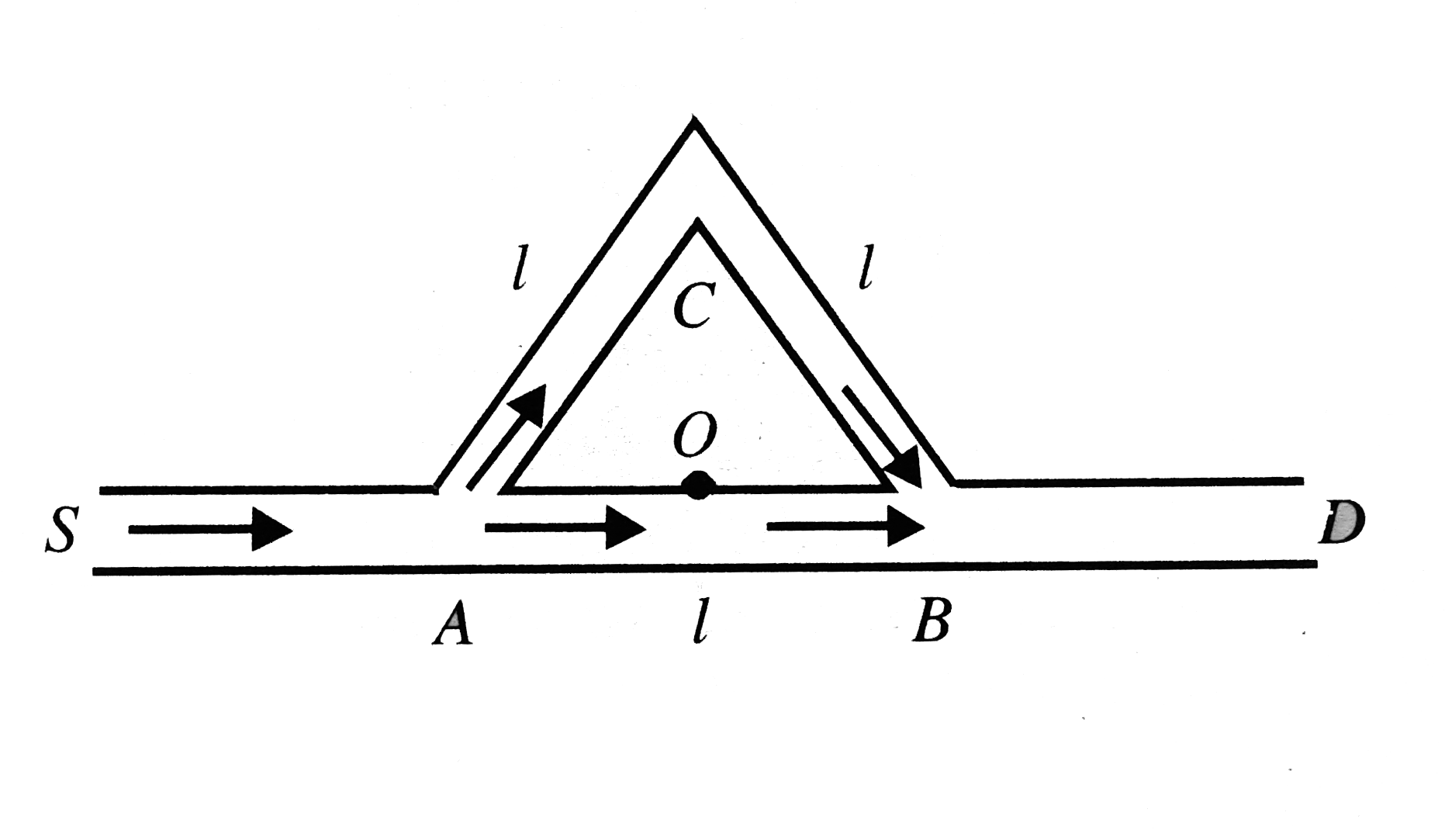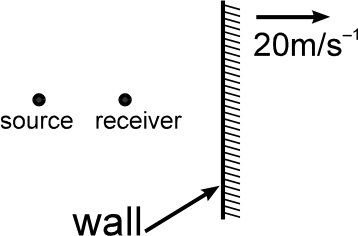In the case of sound waves, wind a blowing from source to reciver with speed UW. Both source and receiver are stationary.If λ0 is the original wavelength with no wind and V is speed of sound in air then wavelength as received is given by :
λ0
(V+UWV)λ0
(V−UWV)λ0
(VV+VW)λ0
The correct Answer is:B
To solve the problem, we need to determine the wavelength of sound waves received when there is wind blowing from the source to the receiver. Let's break down the solution step by step.
1. Understand the scenario:
- We have sound waves emitted from a stationary source.
- There is a wind blowing towards the receiver with speed UW.
- The speed of sound in air is V.
- The original wavelength without wind is λ0.
2. Write the relationship for wavelength without wind:
- The speed of sound V is related to the wavelength λ0 and frequency f by the equation:
V=f⋅λ0
- This is our Equation 1.
3. Consider the effect of wind:
- When the wind is blowing from the source to the receiver, the effective speed of sound becomes V+UW.
- The new wavelength received, denoted as λ′, can be expressed in terms of frequency and effective speed:
V+UW=f⋅λ′
- This is our Equation 2.
4. Relate the two equations:
- From Equation 1, we can express frequency f as:
f=Vλ0
- Substitute this expression for f into Equation 2:
V+UW=(Vλ0)⋅λ′
5. Rearranging the equation:
- Rearranging gives:
λ′=(V+UW)⋅λ0V
6. Final expression for the received wavelength:
- Thus, the wavelength as received λ′ is given by:
λ′=λ0⋅(1+UWV)
Final Answer
The wavelength as received is:
λ′=λ0⋅(1+UWV)
- We have sound waves emitted from a stationary source.
- There is a wind blowing towards the receiver with speed UW.
- The speed of sound in air is V.
- The original wavelength without wind is λ0.
- The speed of sound V is related to the wavelength λ0 and frequency f by the equation:
V=f⋅λ0
- This is our Equation 1.
- When the wind is blowing from the source to the receiver, the effective speed of sound becomes V+UW.
- The new wavelength received, denoted as λ′, can be expressed in terms of frequency and effective speed:
V+UW=f⋅λ′
- This is our Equation 2.
- From Equation 1, we can express frequency f as:
f=Vλ0
- Substitute this expression for f into Equation 2:
V+UW=(Vλ0)⋅λ′
- Rearranging gives:
λ′=(V+UW)⋅λ0V
- Thus, the wavelength as received λ′ is given by:
λ′=λ0⋅(1+UWV)
The wavelength as received is:
λ′=λ0⋅(1+UWV)
Topper's Solved these Questions
- SOUND WAVESBOOK - RESONANCE ENGLISHCHAPTER - SOUND WAVESEXERCISE - Exercise- 2 PART - II
20 Videos
- SOUND WAVESBOOK - RESONANCE ENGLISHCHAPTER - SOUND WAVESEXERCISE - Exercise- 2 PART - III
19 Videos
- SOUND WAVESBOOK - RESONANCE ENGLISHCHAPTER - SOUND WAVESEXERCISE - Exercise- 1 PART - II
30 Videos
- SIMPLE HARMONIC MOTIONBOOK - RESONANCE ENGLISHCHAPTER - SIMPLE HARMONIC MOTIONEXERCISE - Exercise
28 Videos
- STRING WAVESBOOK - RESONANCE ENGLISHCHAPTER - STRING WAVESEXERCISE - Exercise
32 Videos
Similar Questions
Knowledge Check
A source of sound producing wavelength 50 cm is moving away from a stationary observer with (15)th speed of sound. Then what is the wavelength of sound received by the observer?
A55 cmB40 cmC60 cmD70 cm
A sound source and listener are both stationary and a strong wind is blowing. Is there a Doppler effect?
View SolutionWhen source and detector are stationary but the wind is blowing at speed vW, the apparent wavelength λ' on the wind side is related to actual wavelength λ by [take speed of sound is air as v]
View SolutionWhen a source moves away from a stationary observer, the frequency is 67 times the original frequency. Given: speed of sound =330ms . The speed of the source is
View SolutionA sound wave starting from source S, follows two paths AOBandACB to reach the detector D. If ABC is an equilateral traingle , of side l and there is silence at point D, the maximum wavelength (λ) of sound wave must be

View SolutionSpeed of sound wave is v. If a reflector moves towards a stationary source emitting waves of frequency f with speed u, the wavelength of reflected waves will be
View SolutionA source of sound of frequency 300 Hz and a receiver are located along the same line normal to the wall as shown in the figure. Both the source and the receiver are stationary and the wall receeds from the source with velocity 20ms−1.If the beat frequency registered by the receiver is 240x Hz then x is :
(Assume Vsound=300 m/s).

View SolutionA source of sound of frequency 1000 Hz moves to the right with a speed of 32ms relative to the ground. To its right there is a reflecting surface moving to the left with a speed of 64ms relative to the ground. Take the speed of 64ms. Relative to the ground. Take the speed of sound in air to be 332ms and find
(a) The wavelength of the sound emitted in air by the source,
(b) the number of waves per second arriving at the reflecting surface,
(c ) The speed of the reflected waves and
(d) The wavelength of the reflected waves.
View Solution
